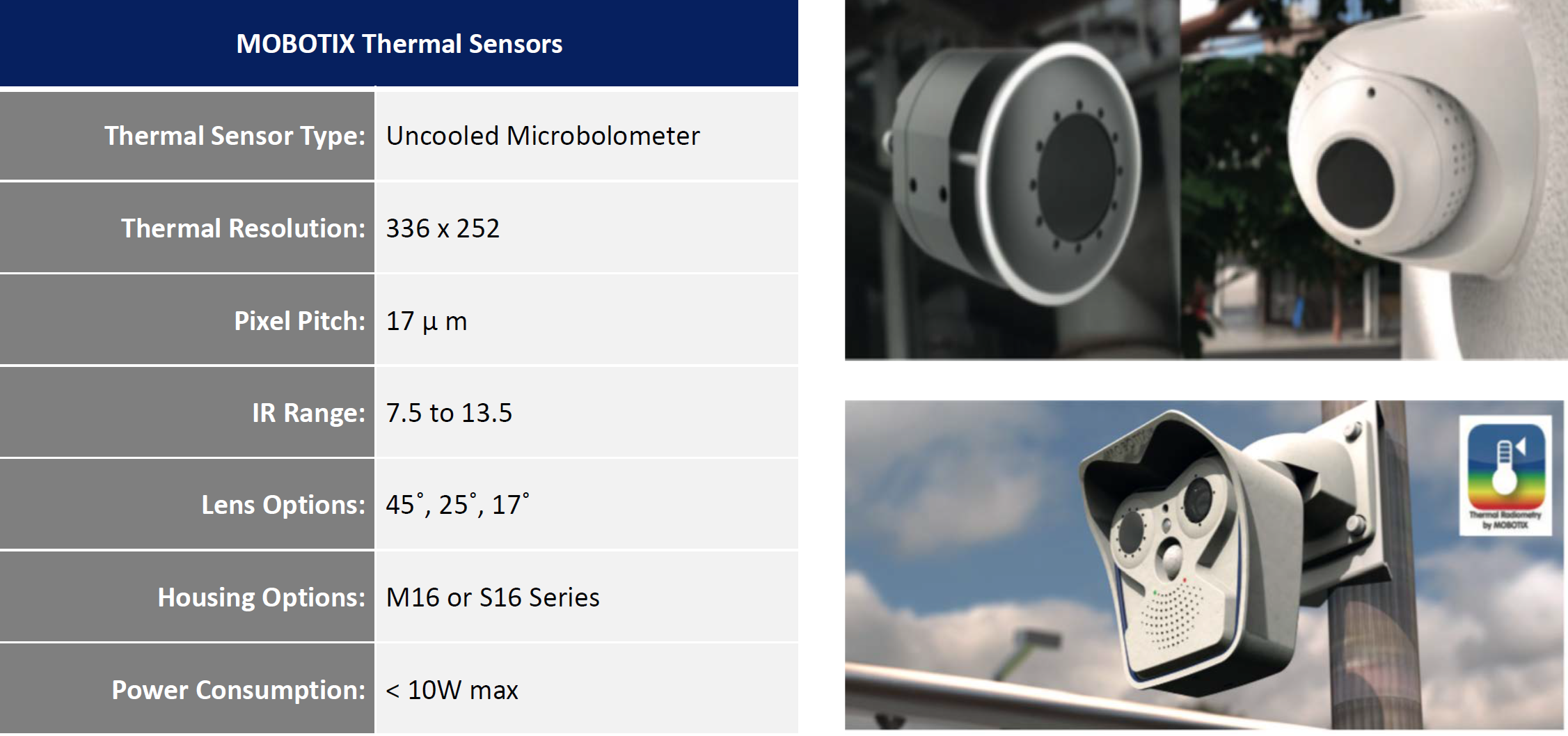
Temperature Detection Using Thermal Imaging Technology
The COVID-19 pandemic has changed and will continue to change the way we conduct our everyday lives and how many companies will conduct business in the future. Many companies are now looking for options to detect future outbreaks and prevent spreading of Coronavirus. One of these measures is human body temperature detection as a pre-screening tool using thermal imaging of people near building entry points.
Thermographic imaging technology is a non-contact process that makes the infrared radiation of an object visible to the human eye. With optimal configuration and appropriate screening settings, MOBOTIX Thermal Radiometry (TR) cameras can assist practitioners with detecting elevated body temperatures which may require further investigation by trained medical practitioners. This process is used by airports, hospitals, aged care homes, banks, and other large-scale workplaces such as mine sites.
It is important to note that thermal cameras are not medical grade human temperature monitoring devices such as black body radiators and so cannot be deemed highly accurate for fever detection. Thermal cameras can, however, be used to alert security or triage staff to potential suffers of elevated temperatures on human beings that can then be referred to a medical professional for further screening or medical attention.
Being able to measure these temperature differences rely on optimal conditions to reduce false positives. Considerations include: proper pre-configuration of the thermal camera settings using the most suitable lens type; ensuring the ideal angle and proximity of the person (2m); and having clear line of site with the target location in the T section of the face aimed at the medial canthus (rear duct).
A quick primer on the number of factors that may affect thermal accuracy:
- Object Emissivity is the measurement of an object’s ability to emit infrared energy as thermal radiation, it is based on the surface of the object and influenced by the material it is made from. This is generally measured between 0 (e.g. mirror) and 1.0 (black body radiator).
- Atmospheric Transmission is the measurement of atmospheric purity between an object and thermal sensor. In the MOBOTIX configuration this is reflected as a percentage and leverages the value configured for Ambient Temperature. A value of 100(%) would determine that there are absolutely no particles in the space between the object and thermal sensor that obstruct transmission.
- Distance is not usually a factor when using conventional thermal and temperature sensors as these measurements are usually taken with minimal space between the thermal sensor and target object. Therefore, maintaining an appropriate distance to the target is key to accurate temperature readings.
The factors that can affect a thermal sensor’s ability to accurately measure the temperature of object is primarily due to different gas molecules and aerosol particles – the majority of which include water vapor and carbon dioxide. Hence, by increasing the distance between the target object and thermal sensor you are effectively increasing the number of particles that exist within the space and directly affecting the relative accuracy of the thermal measurement.
It is vital to have the thermal camera strategically placed and aligned to ensure an accurate reading, and just controlling the distance to a target is not enough to guarantee as accurate result due to other contributing factors such as external heat sources. Try to avoid imaging people coming directly from hot direct sunlight; allow for time within a regulated temperature zone, create lines to control movements and indicate stopping points and have glasses removed.
While using a thermal camera can help detect elevations on body temperature, without proper calibration and often support of professional medical instruments, false positives are likely to occur. As these cameras can in no way detect infection, it is important to have intervention of a licensed medical professional for accurate confirmation of fevers.
MOBOTIX thermal technology can be used as a proactive warning system. The MOBOTIX TR (Thermal Radiometry) technology allows you to measure thermal radiation in the entire image area and assign a temperature value to each pixel.
- Detection of persons/objects
- Display of temperature differences from 0.1◦C
- Alarm in case of exceeding or falling below defined temperature ranges
- Event triggers (alarm, network message, activation of switching output)
- Screening via special TR windows or the complete sensor image
- Temperature range from -40 to +550◦C
MOBOTIX thermal technology can help analyse critical situations which can be used to initiate further measures. The accuracy is increased by using a black body radiator. MOBOTIX thermal solutions are not medical devices.
MOBOTIX thermal sensors come in a range of different form factors including the S and M ranges. The M16B or the new M73 can support the combination of a thermal and optical lenses. Recommended thermal lens types for this application are TR119 (25 degrees) and TR237 (17 degrees). By adding an MX-GPS-BOX or MX-EXTIO to your system you can utilise temperature alarms to automatically reconfigure the thermal sensor calibration (does not configure atmospheric transmission) or to simultaneously switch between thermal temperature ranges dependent on the ambient temperature.
If you’d like to know more about best practice calibration, reach out to your Madison Technologies Sales Rep for more information and for a copy of MOBOTIX’s Thermal Technology Guide.


Reference: MOBOTIX Thermal Configuration Guide – Best Practice Without the Use of a Black Body Radiator.
